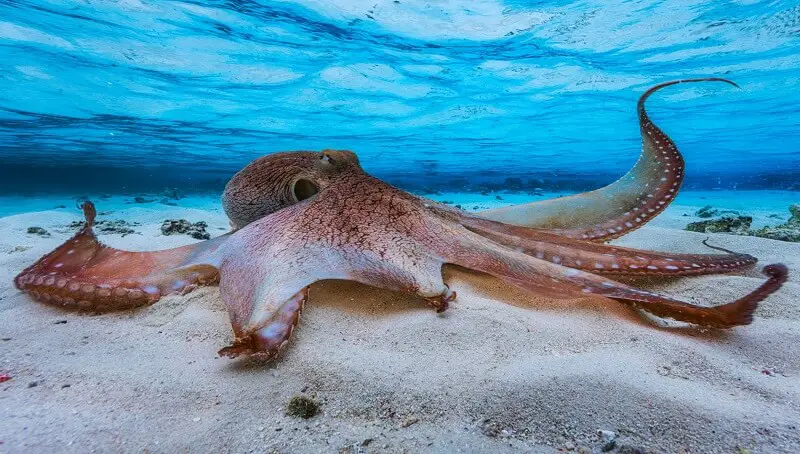Activated charcoal has been used in home aquariums for decades and is still the most bought product for filtration systems. As new types of filters and materials became available, the debate about the effectiveness of active charcoal in filters also started.
Some believe that it should be used as standard support for continuous use in most filters. Others believe it should be used only for special needs, and others believe it should not be used at all.
Charcoal is depleted relatively quickly when used in an aquarium filter. For this reason, if you choose to use activated charcoal continuously, it must be replaced regularly. Otherwise, it is not very beneficial.
What is activated charcoal?
Activated charcoal or activated carbon is made from a carbonaceous material that has been heat-treated at very high temperatures to create many tiny pores, thus increasing its surface.
These tiny pores and its massive surface allow the filter material to capture a large volume of material, making it useful for removing pollutants from both air and water.
Different methods of creating activated charcoal have resulted in different forms of material suitable for different uses. In aquariums, the most commonly used form is GAC or granular activated charcoal. Other forms of activated carbon would be:
- BAC, or activated charcoal beads
- EAC, or extruded activated carbon
- GAC, or granulated activated carbon
- PAC, powdered activated carbon, is also available as a tablet.
There are also different sources of charcoal itself, each resulting in a different possible pore size. Materials such as coal, coconut, peat, bamboo, and wood are used to create activated charcoal. For aquariums, the best source is coal.
What does activated carbon do?
Activated charcoal absorbs a number of dissolved contaminants, such as chloramine and chlorine, tannins, which stain the water, and phenols, which cause odors. It will help avoid yellowing the water over time.
You need to understand that there are several important toxins that activated charcoal does not remove. In particular, it does not remove ammonia, nitrites, or nitrates. Therefore, it does not help to remove toxins during the initial installation of the aquarium. Changing the water or other methods should be used to reduce the high levels of ammonia, nitrites, or nitrates.
Heavy metals, such as lead or copper, are not removed. If the water source has heavy metals, use a water treatment product before placing it into the aquarium.
Activated carbon and medicines
Activated charcoal will absorb many drugs used to treat fish diseases. Therefore, before treating sick fish with medicine, all charcoal must be removed from the filter. Once the course of treatment is complete, you can add the activated charcoal back to the filter. The charcoal will remove any residual medicine from the aquarium’s water.
Placing it in the filter
Activated charcoal will lose its effectiveness quite quickly if exposed to a lot of debris from the aquarium. Keep in mind that if you do not keep your aquarium clean and debris accumulates in the filter, activated charcoal will not be effective.
Change of active charcoal
Since activated charcoal absorbs the compounds it removes, it eventually becomes saturated. Therefore, it needs to be replaced regularly, once a month being usually enough. Longer intervals between replacements will not harm the aquarium, but charcoal will gradually lose its ability to remove toxins from the water.
If you see the water getting yellowed or smelly, it’s time to change the activated charcoal.
Myths about the reuse of active charcoal
 There are many stories about the reuse of active carbon. Some even give step-by-step instructions that generally involve baking the charcoal in the oven. These stories are myths.
There are many stories about the reuse of active carbon. Some even give step-by-step instructions that generally involve baking the charcoal in the oven. These stories are myths.
Temperature and pressure are required for the reuse of depleted activated charcoal and cannot be obtained in the kitchen oven.
It is better to buy new charcoal from the fish store or any pet store when you need to replace it and make sure you keep unused activated charcoal in a sealed container as it can absorb odors and chemicals from the air.
De-absorption
You may have heard that once activated charcoal has reached its full capacity, it will begin to drain some of the absorbed materials back into the water. This is not an exact statement. Although technically possible, “de-absorption” requires changes in water chemistry that simply do not occur in an aquarium.
However, the procedures used to create a specific type of activated charcoal can lead to the presence of phosphate in the final product. In this case, the phosphate already present in the activated charcoal may leak into the aquarium water. Some activated carbon products will specifically mention whether they do or do not contain phosphates.
If you experience problems with persistently high levels of phosphates in the aquarium and find no other cause, remove the activated charcoal entirely. Perform normal maintenance of the aquarium for several months and check if the phosphate level remains high. If it remains high, probably the reason for the increased phosphate level was not charcoal.
Be careful when using activated charcoal
You might also like my articles about:
- Why is the water in the aquarium green
- How to fix cloudy aquarium water
- Are bubbles in a fish tank a problem
In general, using activated charcoal in your filter is a good thing, but not a necessity. If you test your water, make periodic partial changes to your aquarium water, and filter your tap water for replacement, you don’t need to use coal. This is just an extra expense, as charcoal needs to be replaced every month.
Coal in a recirculating filtration system will also act as a home for beneficial bacteria that convert ammonia into nitrite and then into nitrate.
When you change the charcoal every month, you’re actually throwing out some of the bio-filter and it will take some time for the new charcoal to grow beneficial bacteria on it. If activated charcoal is a significant material in your filtration system, you will lose the bio-filter with each replacement.
There may be an increase in ammonia levels after the new activated carbon is added. To prevent this, use sponges, beads, granules, or ceramic balls in sufficient amounts in the filter to act as the primary medium for the bacteria that form the biofilter.
Activated charcoal powder, when used in the filtration system, has been reported to reach the aquarium in the form of fine dust that is trapped in the gills of the fish.
There are cases where fish died after inhaling powdered coal that was not properly placed in a bag of materials in the filter. Necropsy done on dead fish showed carbon particles in gills and fin tissues.
Using granulated activated charcoal or tablets, and rinsing them with distilled water before inserting them into the filter space will prevent this problem.
Use distilled or deionized water to rinse the new charcoal to prevent chlorine from being absorbed from tap water before it is inserted into the filter!




